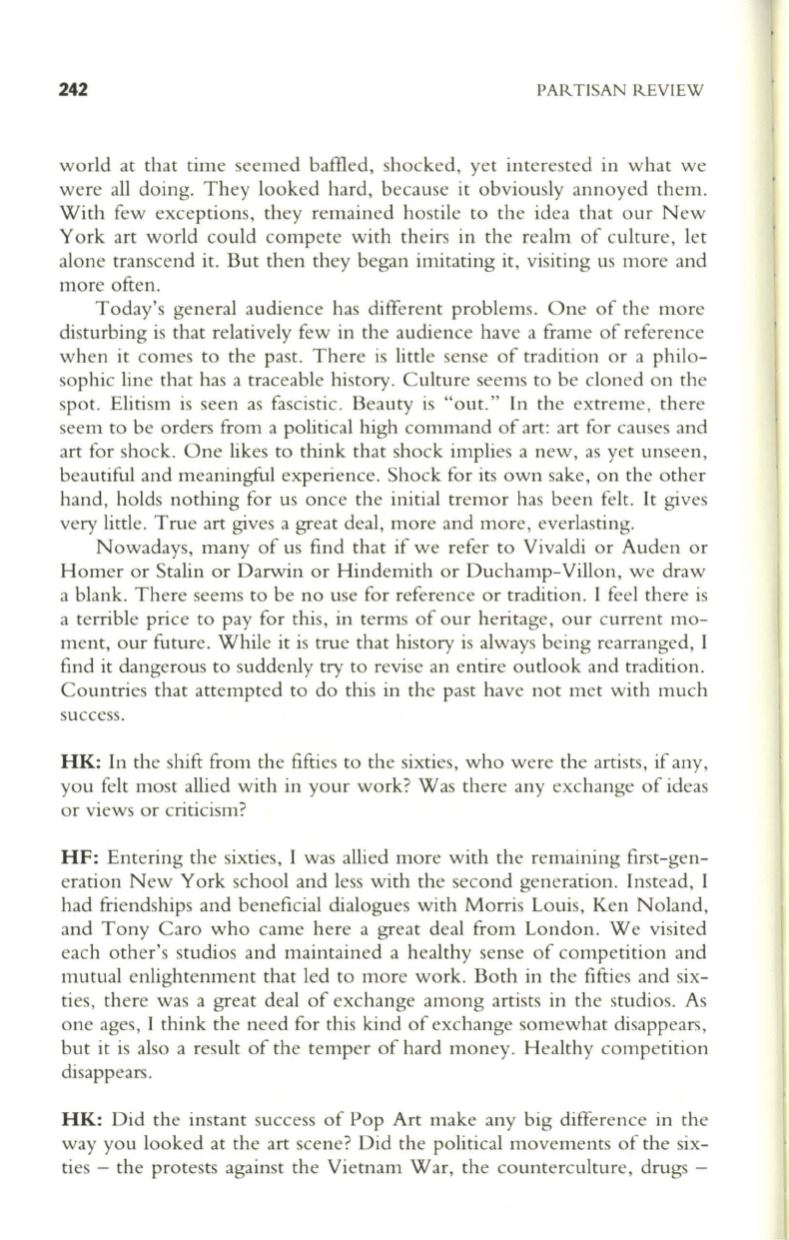
242
PARTISAN REVIEW
world at that time seemed baffled, shocked, yet interested in what we
were all doing. They looked hard, because it obviously annoyed them.
With few exceptions, they remained hostile to the idea that our New
York art world could compete with theirs in the realm of culture, let
alone transcend it. But then they began imitating it, visiting us more and
more often.
Today's general audience has different problems. One of the more
disturbing is that relatively few in the audience have a frame of reference
when it comes to the past. There is little sense of tradition or a philo–
sophic line that has a traceable history. Culture seems to be cloned on the
spot. Elitism is seen as fascistic. Beauty is "out." In the extreme, there
seem to be orders from a political high command of art: art for causes and
art for shock. One likes to think that shock implies anew, as yet unseen,
beautiful and meaningful experience. Shock for its own sake, on the other
hand, holds nothing for us once the initial tremor has been felt. It gives
very little. True art gives a great deal, more and more, everlasting.
Nowadays, many of us find that if we refer
to
Vivaldi or Auden or
Homer or Stalin or Darwin or Hindemith or Duchan"lp-Villon, we draw
a blank. There seems to be no use for reference or tradition. I feel there is
a terrible price to pay for this, in terms of our heritage, our current mo–
ment, our future. While it is true that history is always being rearranged, I
find it dangerous to suddenly try to revise an entire outlook and tradition.
Countries that attempted to do this in the past have not met with much
success.
HK:
In the shift from the fifties to the sixties, who were the artists, if any ,
you felt most allied with in your work? Was there any exchange of ideas
or views or criticism?
HF:
Entering the sixties, I was allied more with the remaining first-gen–
eration New York school and less with the second generation . Instead, I
had friendships and beneficial dialogues with Morris Louis, Ken Noland,
and Tony Caro who came here a great deal from London. We visited
each other's studios and maintained a healthy sense of competition and
mutual enlightenment that led to more work. Both in the fifties and six–
ties, there was a great deal of exchange among artists in the studios. As
one ages, I think the need for this kind of exchange somewhat disappears,
but it is also a result of the temper of hard money. Healthy competition
disappears.
HK:
Did the instant success of Pop Art make any big difference in the
way you looked at the art scene? Did the political movements of the six–
ties - the protests against the Vietnam War, the counterculture, drugs -


